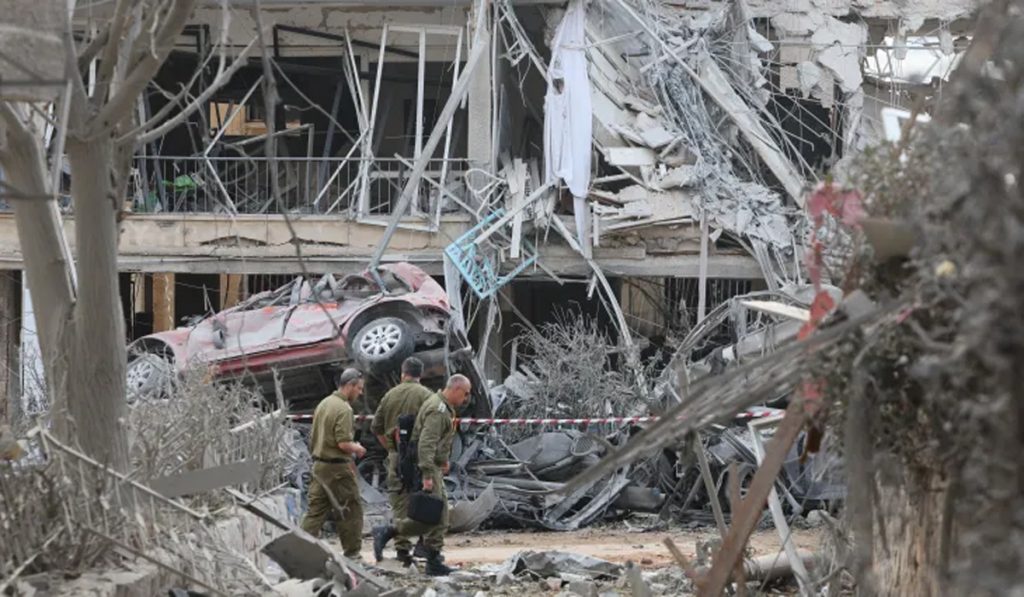Tensions in West Asia have boiled over into one of the most significant military confrontations in recent decades. In a sudden and intense escalation, Israel launched major airstrikes early Friday, June 13, targeting Iranian nuclear facilities and military leadership. The strike — described by analysts as the most aggressive Israeli action since the Iran-Iraq war era — reportedly eliminated several high-ranking Iranian military officers, including Islamic Revolutionary Guard Corps commander Hossein Salami, and struck sensitive nuclear enrichment sites.
In swift retaliation, Iran responded with hundreds of ballistic missiles and drones aimed at Israeli cities. Explosions echoed through Tel Aviv, Jerusalem, and even Tehran, as both nations engaged in overnight bombardments, marking the sharpest direct military engagement between the two long-time adversaries. This tit-for-tat has reignited global fears of a broader regional war, potentially drawing in other players from the already volatile Middle East. The Israeli offensive — dubbed “Operation Rising Lion” — appears to have been carefully planned, with precision strikes aimed at undermining Iran’s military capabilities. But it also raises crucial questions: Why now? Observers suggest this could be Israel’s preemptive move against Iran’s accelerating nuclear ambitions, or a response to proxy threats from Iranianbacked militias in Lebanon and Syria. With both sides locked into aggressive posturing, the road ahead remains uncertain. Iran’s retaliation, though massive in scale, had limited success, according to Israeli military sources.
Nonetheless, casualties and damage have been reported — at least three Israeli civilians are confirmed dead and dozens wounded. A significant military facility near Tel Aviv was reportedly hit, raising concerns about the effectiveness of Israel’s much-lauded air defense systems, including the Iron Dome. As the conflict escalates, questions loom over how far each side is willing to go. Military analysts point to Israel’s qualitative edge in airpower and intelligence, but Iran possesses significant missile capabilities and a wide web of allied militias across the region. The possibility of this conflict drawing in Lebanon’s Hezbollah, Syria, or even escalating in the Red Sea cannot be ruled out. Meanwhile, far from the chaos in West Asia, another crisis is unfolding in the United States. A series of protests over immigration policy erupted in Los Angeles on June 6 and have since spread to major cities including New York, San Francisco, Chicago, and Houston.
At the center of the storm is President Donald Trump, who has reignited controversy with his hardline immigration measures. This past week, he deployed the National Guard and even US Marines to contain what he called “unlawful assemblies.” California Governor Gavin Newsom, a vocal critic, clashed publicly with the President, leading to an extraordinary moment when Trump hinted at the possibility of arresting Newsom — a move that triggered further backlash. The demonstrations reached their peak on Saturday, June 14 — a date that marked Trump’s 79th birthday and the 250th anniversary of the US Army.
While the capital hosted a grand military parade with tanks, jets, and even robotic dogs on display, thousands gathered nearby for what were dubbed “No Kings” rallies — a pointed jab at the President’s increasingly authoritarian tone. Protesters across cities carried signs demanding immigration reform, dignity for undocumented workers, and an end to “fear-based governance.” One particularly disturbing incident added fuel to the fire: a video that surfaced of an Indian student being detained at a New Jersey airport. The footage showed the student handcuffed and pinned to the ground, which sparked outrage on social media.
The Indian Consulate intervened, prompting a response from the US Embassy clarifying its stance against visa misuse but also assuring fair treatment of all detainees. Later, the Indian government confirmed that the student had entered the US on an invalid visa, though the diplomatic dust-up continues. Amid all this, the 313 Brigade — a Pakistanbased extremist group with alleged ties to al-Qaeda — resurfaced in public debate after Pakistani Senator Sherry Rehman sidestepped questions about it in a televised interview. The group has long been suspected of being involved in global terror operations and remains a point of concern for regional stability in South Asia. Back in the defense sphere, another hot topic this week was the American F-35 stealth fighter jet. Once seen as the crown jewel of US military aviation, the aircraft now faces declining demand — even from its primary buyer, the US military.
Despite India being courted as a potential buyer, questions around cost, maintenance complexity, and performance have dampened enthusiasm globally. These developments — both in terms of international conflict and domestic unrest — underscore a world on edge. With Israel and Iran locked in open hostility, the risks of escalation into a fullblown regional war are very real. In the United States, deepening divisions over immigration, governance, and presidential power are manifesting in ways not seen in decades. As the world watches both battlefields — one physical and one political — unfold in real-time, one thing is clear: the coming days will be crucial in determining whether these crises intensify or if cooler heads prevail.
